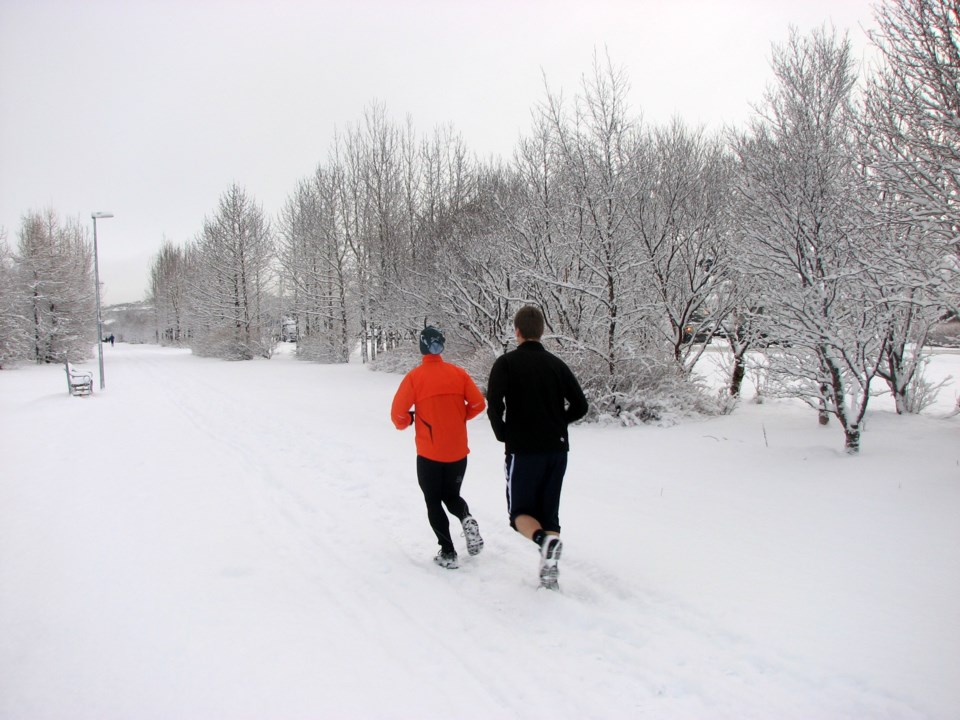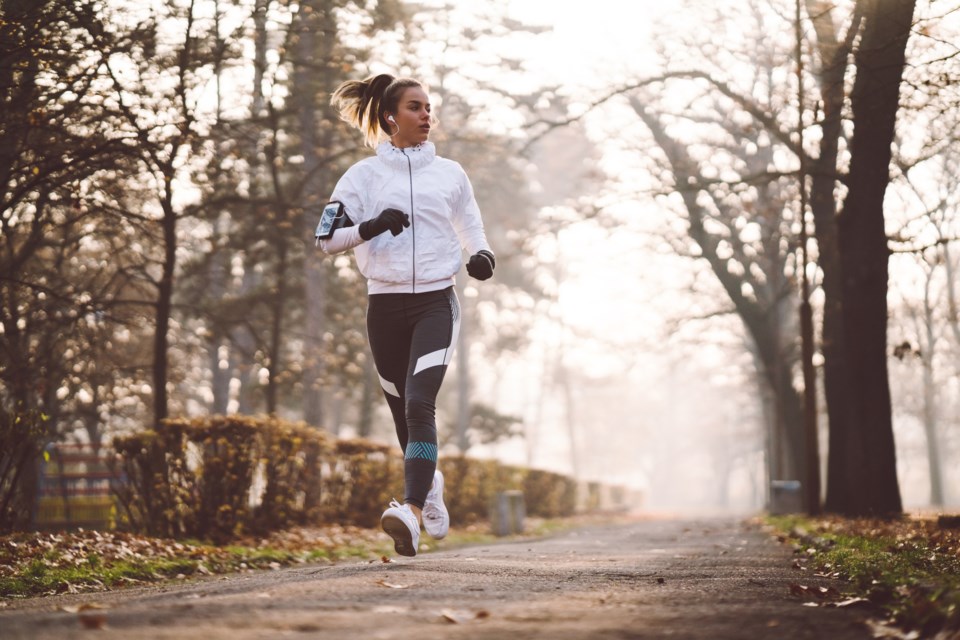Fitness is a year-round journey, but one that can be made more challenging by colder weather.
While it may be tempting to put off your exercise habits until it starts to warm up outside, abandoning your fitness routine (even temporarily) can make it nearly impossible to get back to where you want to be physically when you do decide to resume.
Below are some tips to safely keep up your exercise habits in winter weather so you can stay on track.

Bundle Up
If you’re used to running or jogging outdoors, don’t let the colder weather stop you from this cardio exercise that’s great for your whole body. Wear leggings or loose jogging pants (your body will gradually heat up as you run despite the cold) and thicker socks than you’d typically use while out on a run. A light jacket is also a must, as it will keep you warm without restricting your body from moving. A warm hat or earmuffs are a good idea, too. On an especially chilly morning, a pair of gloves will keep your hands warm so you can run or jog in the most comfortable way possible.
Brighten Your Wardrobe
In the winter months, not only is it colder outside, but darker too. Wear brightly coloured clothing and reflective gear to both stay warm and so drivers and pedestrians can spot you. When out at night, wearing a flashlight on your hat or at your waist is also an excellent idea for your visibility to prevent any potential slips and falls.
Take Care of Your Skin
Winter air can lead to dry and irritated skin. Make sure to apply lotion or moisturizer to your skin in addition to drinking plenty of water. Use petroleum jelly on sensitive areas of the skin such as your nostrils, the tip of your nose, and your ears for added protection. Additionally, it’s essential to remember that, even in the winter, harmful rays can reach and damage your skin. Applying sunscreen with an SPF of 30 or higher before you go outside will ensure your skin stays healthy during the dry winter months.
Photo: svetikd via gettyimages.com
Check the Forecast
If you live in an area with a lot of snow or other wintery weather, it may be best to postpone your exercise until later in the day when the sun is out and the snow or ice has had a chance to melt. This will allow for better road conditions and ensure that you’re not exercising on wet or icy sidewalks or pavement. Use your best judgment, and stay indoors during winter weather advisories or when road conditions make exercising outdoors (or driving to the gym) unsafe.
Don’t Skip the Warm-up
Warming up before your workout is always a good idea, regardless of the weather. However, it’s even more important to get a good warm-up before exercising in colder weather to increase the your muscles’ blood flow and temperature. Modify your warm-up to benefit what you plan on doing that day, whether that’s lunges and squats before running or simply stretching.
Watch Your Breathing
Breathing can feel particularly difficult while out exercising in the cold. That’s because the human body reacts to warmer, dry air much differently than the cold. In lower temperatures, airway passages tend to narrow, which makes inhalation more challenging for your lungs. While working out outdoors, try to consciously breathe in through your nose. Wrap a scarf or a light neck wrap to keep the air your breathing in moister.
Though working out in the cold is no easy feat and provides added challenges, it’s also no reason to postpone or give up on your fitness journey. Take the proper precautions and pop on the right gear, and you’ll be set for whatever the winter months may throw at you.




